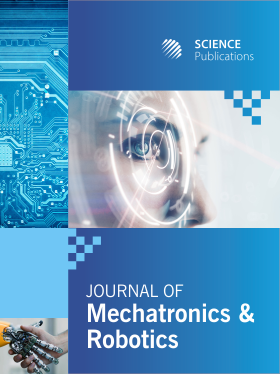Improved Model Predictive Control System Design and Implementation for Unmanned Ground Vehicles
- 1 Department of Mechanical Engineering, North Carolina A&T State University, Greensboro, United States
Abstract
Autonomous ground robots autonomously are being used inthe places where it is very hazardous for human beings to reach and operate,such as nuclear power plants and chemical industries. The aim of the researchpresented here is to develop a control system that enables such ground robotsnavigate autonomously with various sensors as the depth camera, 2D scanninglaser, 3D Lidar, GPS, and IMU. The controller uses the current positionmeasured using the sensors on the Husky A200, given the waypoints of thedestination. Then it calculates the best possible route based on the recentevents provided using IMU data and GPS. The Model Predictive Control (MPC)improves the robot’s motion, by using a path planner for the robot’s trajectorygeneration. The use of global reference frame waypoints is planned to createthe appropriate path and the actions required to follow the motion planner’sdirection. The path planner depends on the active sensor data such as locationsand size of obstacles. Then, a feasible path is generated based on the sensordata. The desired trajectory consists of a set of waypoints fit in a 3rd-orderpolynomial. They determine the path’s feasibility for the ground robot’sdynamics and a series of points generated with a certain velocity andacceleration profile. The MPC adjusts the robot’s lateral, longitudinal, yawmotions and approximates a continuous trajectory with discrete paths to commandbehaviors. The kinematic model of a robot, Husky is used as the dynamic modelfor transient and steady-state characteristics. The camera captures the imagesand other types of data processed through the computational framework used tobuild machine learning models. TensorFlow is used for deep learning and toidentify and classify various objects around the Husky. This research haslimitations such as using the linear dynamic model as the LQR method. Also onvehicle models, the vehicle model considered in this research considers aconstant value to describe the slope in the most linear region. Detaileddiscussion on MPC development with a major system design factor has beenemphasized with logical steps in MPC.
DOI: https://doi.org/10.3844/jmrsp.2022.90.105

- 4,071 Views
- 2,224 Downloads
- 9 Citations
Download
Keywords
- Model Predictive Control
- Unmanned Ground Robot
- Autonomous Navigation
- Trajectory Generation
